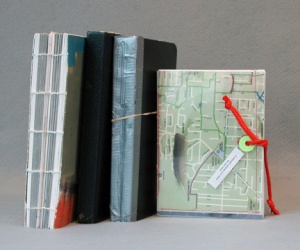Virginia Woolf “…minds are threaded together… now any live mind is of the very same stuff as Plato and Euripides…It is this common mind that binds the whole world together and all the world is mind.”
My artist’s book Mrs. Dalloway by Virginia Woolf started with me finding a 1925 edition at an estate sale. In reading the book again, I admired Virginia Woolf’s skill in weaving events between one day and flashbacks in the life of Clarissa Dalloway. Virginia Woolf’s story addresses themes of that time: class differences; postwar recovery and prosperity; role of women; pre and post war expectations; post traumatic stress syndrome; colonialism; and mental illness. She gives her characters interior dimensions. As you read their internal dialogues, the characters become real and feel contemporary. To compose my imagery for the artist’s book, I watched the 1997 film Mrs. Dalloway with Vanessa Redgrave in the title role. The director Marleen Gorris skillfully sequenced events, alternating close ups and distant scenes, pairing people in parallel lives, and conveying the moral uncertainty of their lives.
From these film scenes, I created eighteen unique monotypes on the pages of Mrs. Dalloway, connecting passages in the book with scenes from the film, to follow the novel’s progression. The monotypes are glued onto the pages of the novel which are then glued onto backing paper (in the case of the accordion format) and reassembled in the book’s original cover or drumleaf bound with a handmade cover.
The process of making this artist’s book of Mrs. Dalloway gave me renewed appreciation for the intelligent style and depth of Virginia Woolf’s writing and her keen observations of contemporary life.













You must be logged in to post a comment.